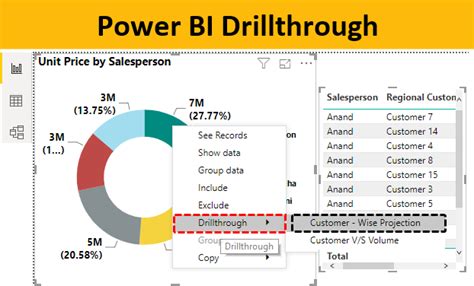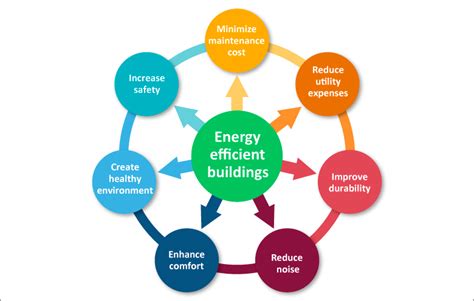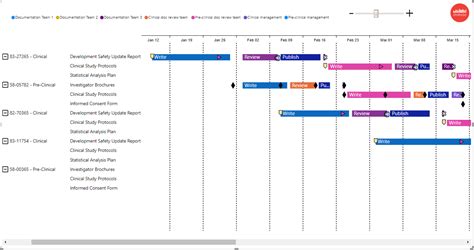Energy management is a critical aspect of modern business operations, as it directly impacts both the bottom line and the environment. With the increasing demand for sustainable practices, companies are looking for innovative ways to optimize their energy consumption. One of the key tools that have emerged in recent years to help organizations achieve this goal is Power BI, a business analytics service by Microsoft. Power BI offers a robust platform for data analysis and visualization, enabling businesses to make informed decisions about their energy usage. In this article, we will explore five ways Power BI enhances energy management, providing actionable insights for organizations seeking to reduce their energy footprint.
Key Points
- Power BI offers real-time energy consumption monitoring, enabling prompt responses to inefficiencies.
- Data visualization capabilities in Power BI facilitate the identification of trends and patterns in energy usage.
- Power BI integrates with various data sources, including IoT devices and building management systems, for comprehensive energy management.
- The platform allows for the creation of customized dashboards and reports, catering to specific energy management needs.
- Power BI's predictive analytics capabilities help forecast energy demand, enabling proactive planning and optimization strategies.
Real-Time Energy Consumption Monitoring

One of the most significant advantages of using Power BI for energy management is its ability to provide real-time monitoring of energy consumption. By integrating with various data sources such as smart meters, IoT devices, and building management systems, Power BI can collect and analyze energy usage data as it happens. This real-time insight allows organizations to quickly identify areas of inefficiency and take prompt action to address them, whether it’s adjusting operational schedules, optimizing equipment performance, or implementing energy-saving measures. For instance, a manufacturing plant can use Power BI to monitor the energy consumption of its machinery in real-time, enabling it to optimize production schedules and reduce waste.
Advanced Data Visualization
Power BI’s advanced data visualization capabilities are another critical aspect of its energy management enhancement. The platform offers a wide range of interactive and dynamic visualizations, from simple charts and tables to complex maps and gauges. These visualizations can be used to represent energy consumption data in a way that is easy to understand, making it simpler for stakeholders to identify trends, patterns, and anomalies in energy usage. For example, a retail chain can use Power BI to create a dashboard that visualizes energy consumption across different stores, allowing it to compare performance and identify opportunities for improvement.
| Energy Management Aspect | Power BI Capability |
|---|---|
| Real-Time Monitoring | Integration with IoT devices and smart meters |
| Data Visualization | Interactive and dynamic visualizations |
| Predictive Analytics | Forecasting energy demand based on historical data and external factors |
| Customization | Creation of tailored dashboards and reports |
| Integration | Connection with various data sources and systems |

Predictive Analytics for Energy Demand Forecasting

Power BI’s predictive analytics capabilities play a crucial role in energy management by enabling organizations to forecast energy demand. By analyzing historical energy consumption data, weather patterns, and other external factors, Power BI can predict future energy demand with a high degree of accuracy. This predictive insight allows organizations to plan and optimize their energy supply, reducing the risk of overconsumption or underconsumption. For instance, a university can use Power BI to forecast energy demand during peak periods, such as exam weeks, and adjust its energy supply accordingly to avoid waste and ensure reliability.
Customization and Integration
Another significant advantage of Power BI for energy management is its customization and integration capabilities. The platform allows users to create tailored dashboards and reports that cater to their specific energy management needs. Additionally, Power BI can integrate with a wide range of data sources and systems, including building management systems, IoT devices, and enterprise resource planning (ERP) software. This integration enables organizations to access a comprehensive view of their energy consumption, making it easier to identify areas for improvement and optimize their energy management strategies. For example, a hospital can use Power BI to integrate data from its building management system, energy meters, and clinical systems, providing a holistic view of its energy consumption and enabling data-driven decisions.
How can Power BI help reduce energy consumption?
+Power BI can help reduce energy consumption by providing real-time monitoring, advanced data visualization, and predictive analytics. These capabilities enable organizations to identify areas of inefficiency, optimize energy supply, and implement energy-saving measures.
Can Power BI integrate with existing energy management systems?
+Yes, Power BI can integrate with a wide range of energy management systems, including building management systems, IoT devices, and ERP software. This integration enables organizations to access a comprehensive view of their energy consumption and optimize their energy management strategies.
How can Power BI support sustainable energy practices?
+Power BI can support sustainable energy practices by providing organizations with the insights and tools they need to optimize their energy consumption, reduce waste, and transition to renewable energy sources. By leveraging Power BI's predictive analytics and data visualization capabilities, organizations can make informed decisions about their energy management strategies and reduce their environmental impact.
In conclusion, Power BI offers a powerful platform for energy management, providing organizations with the insights and tools they need to optimize their energy consumption, reduce waste, and transition to sustainable energy practices. By leveraging its real-time monitoring, advanced data visualization, predictive analytics, customization, and integration capabilities, organizations can unlock significant energy savings, reduce their environmental impact, and improve their bottom line. As the demand for sustainable energy practices continues to grow, Power BI is poised to play a critical role in helping organizations achieve their energy management goals and create a more sustainable future.



